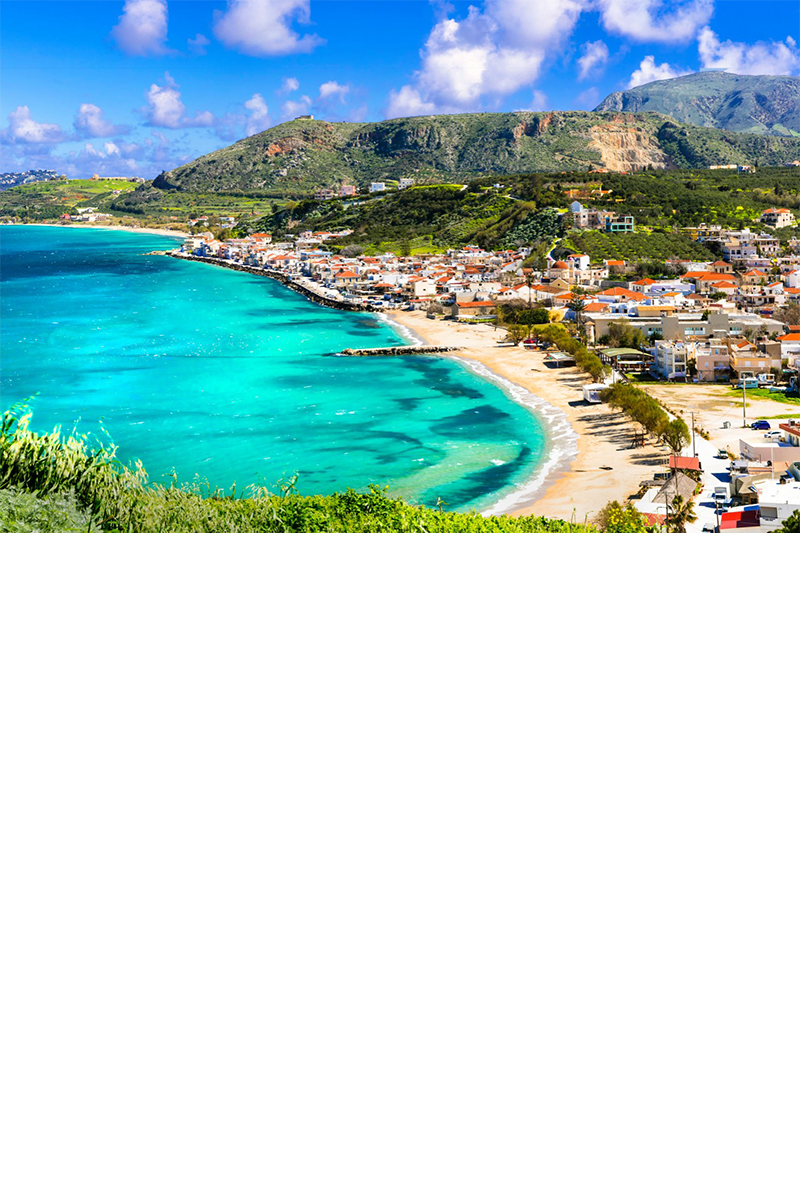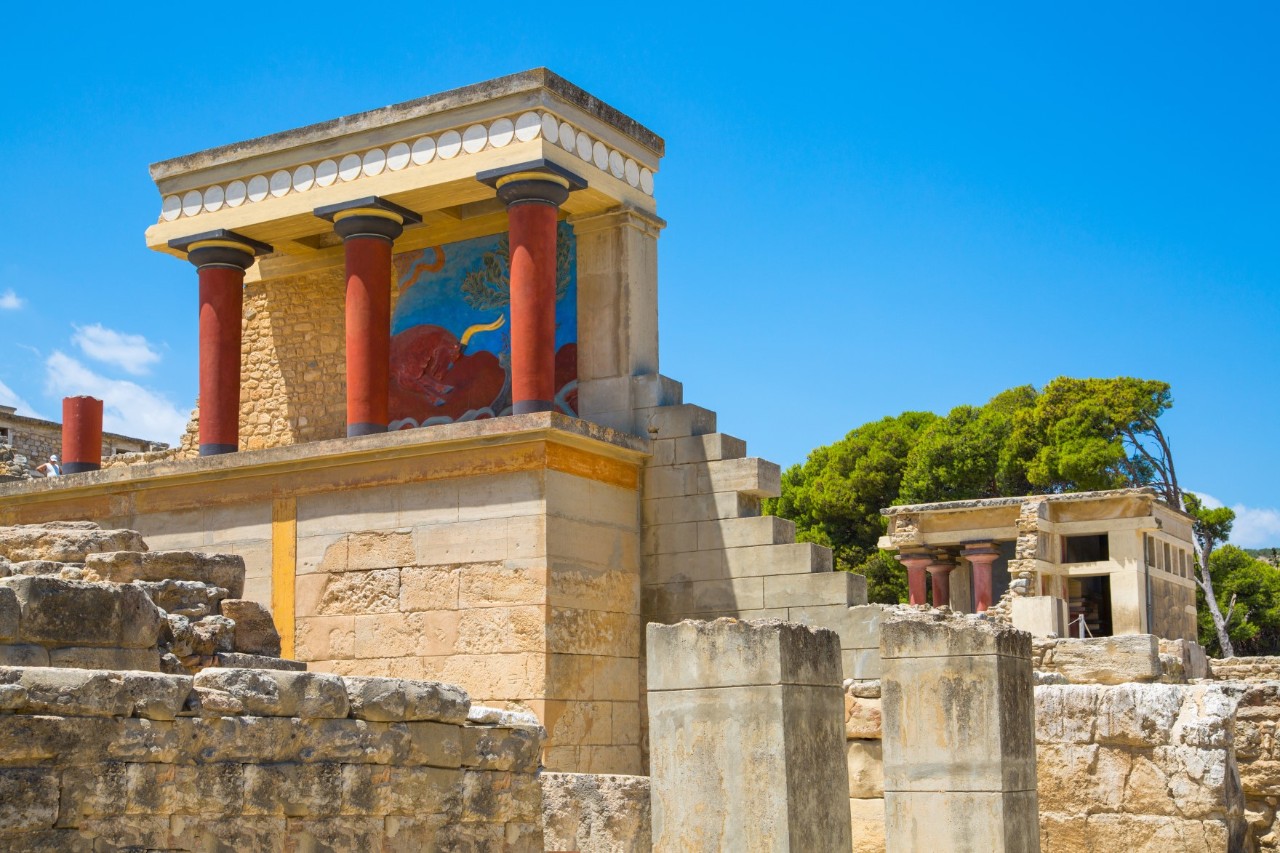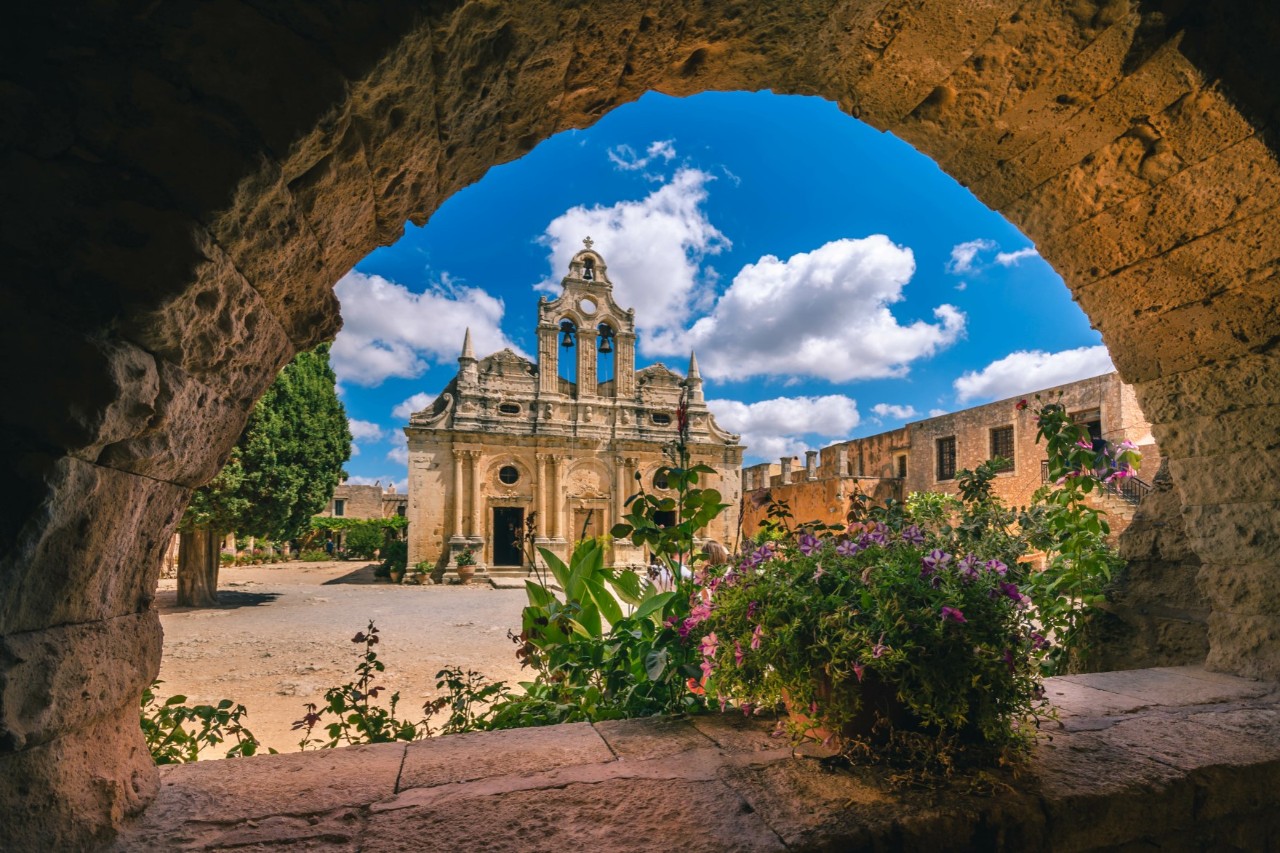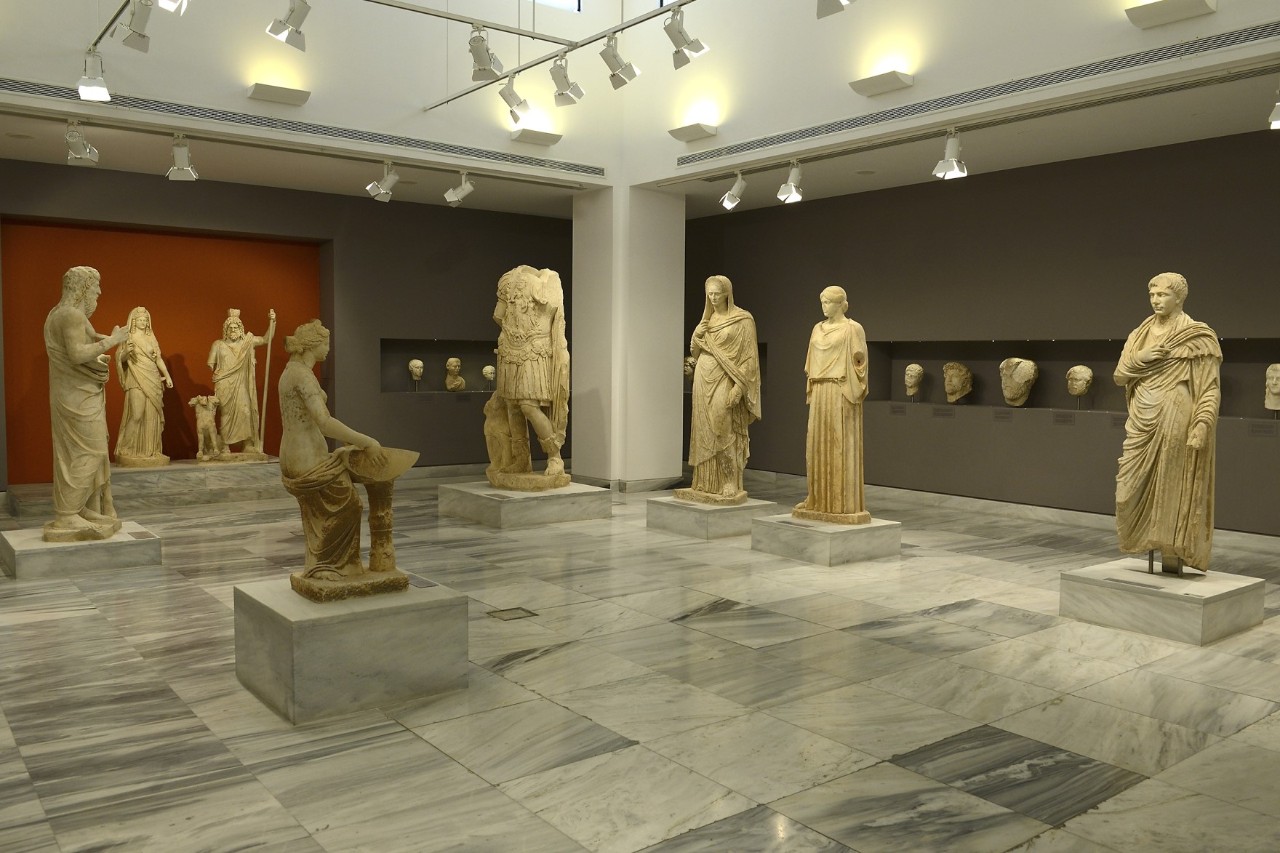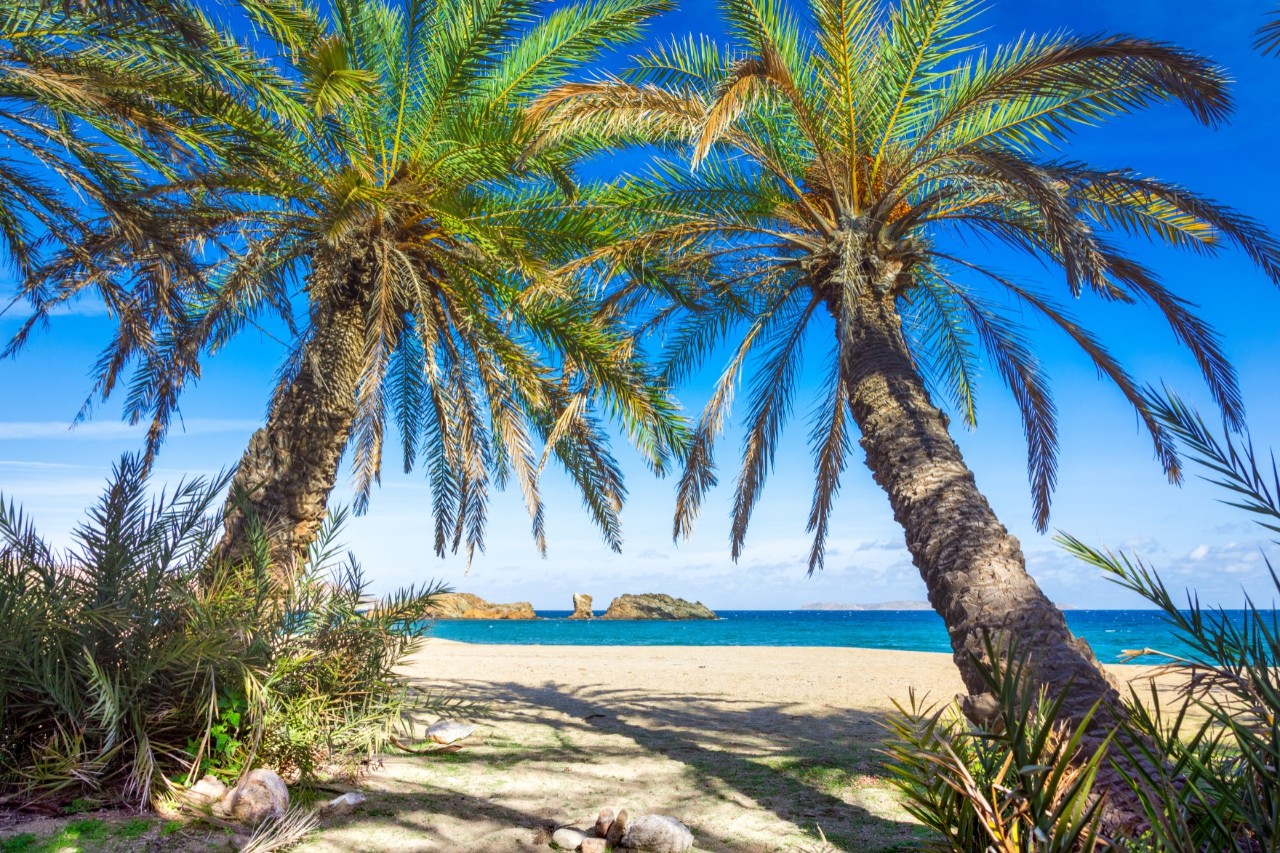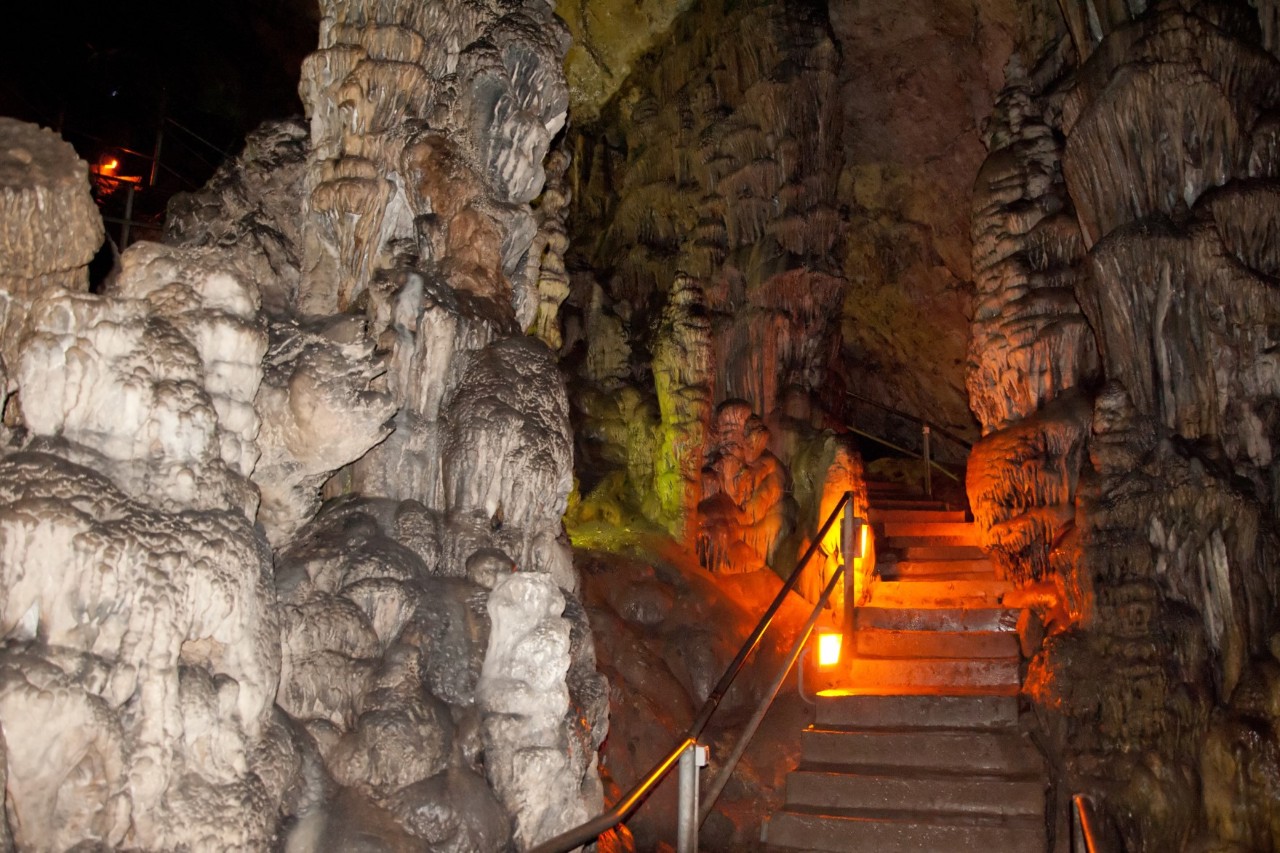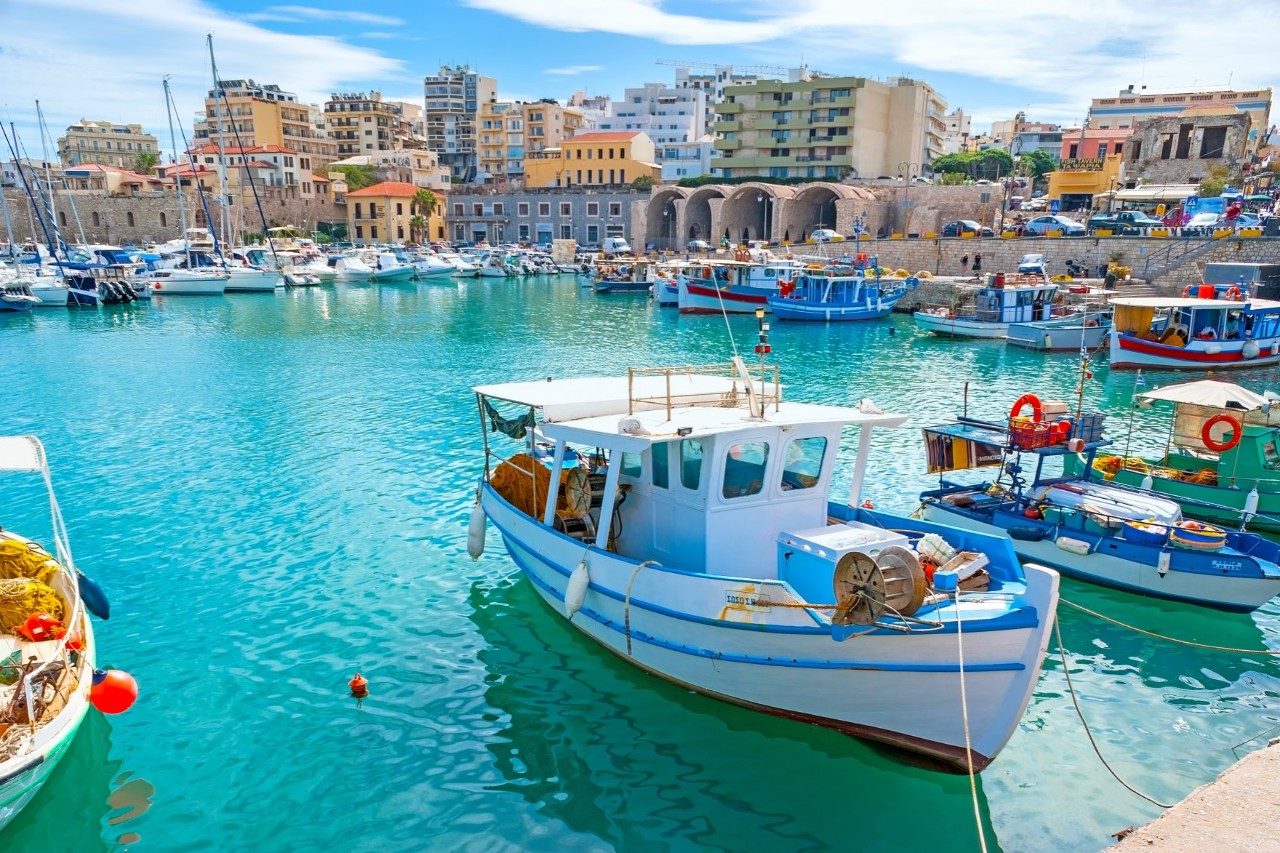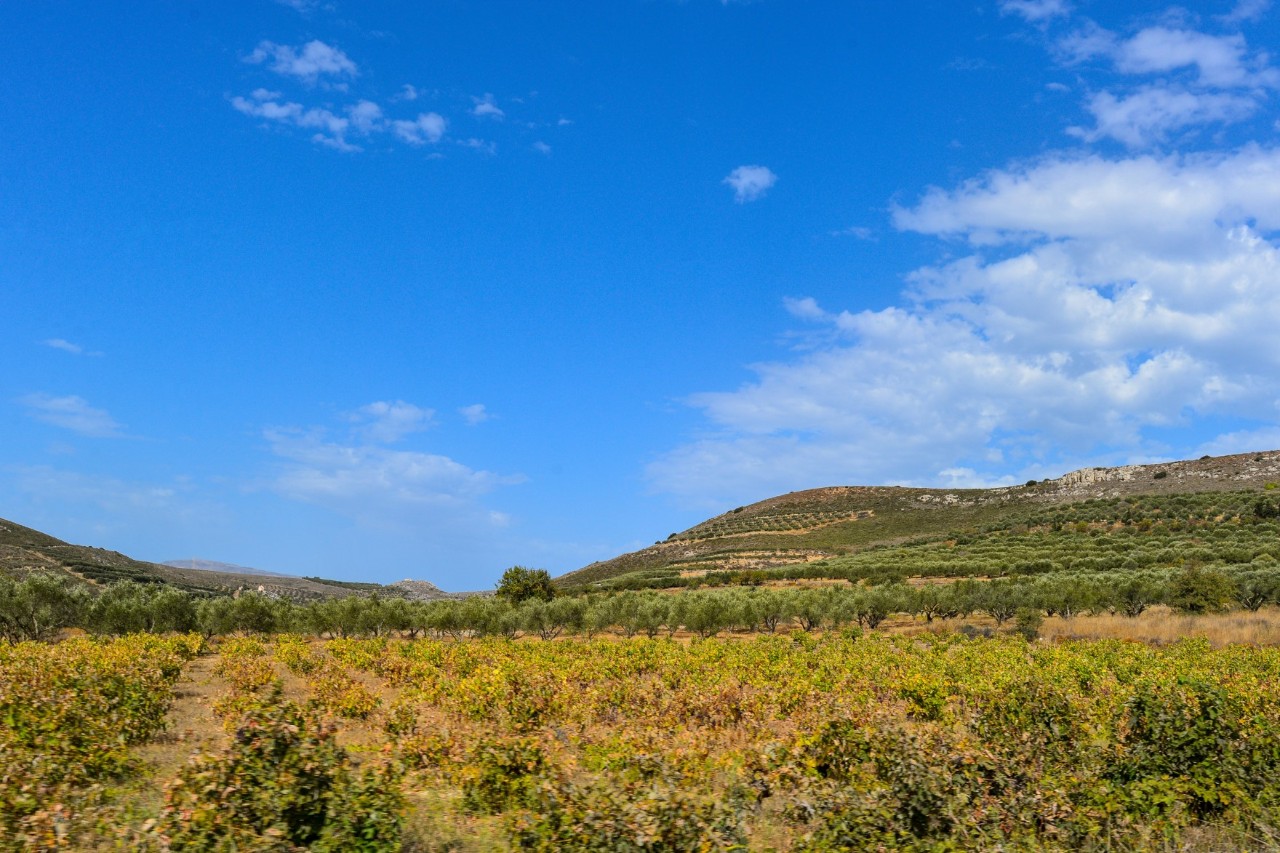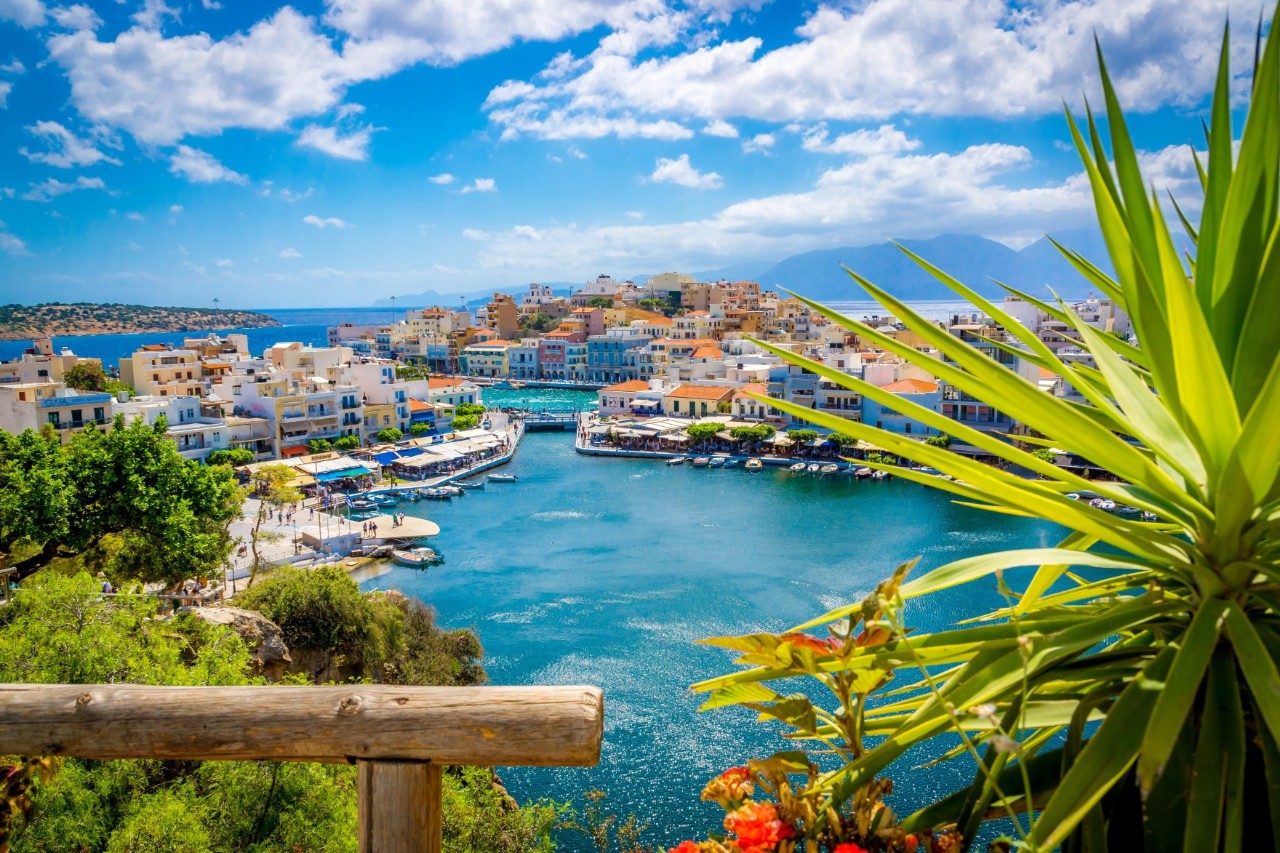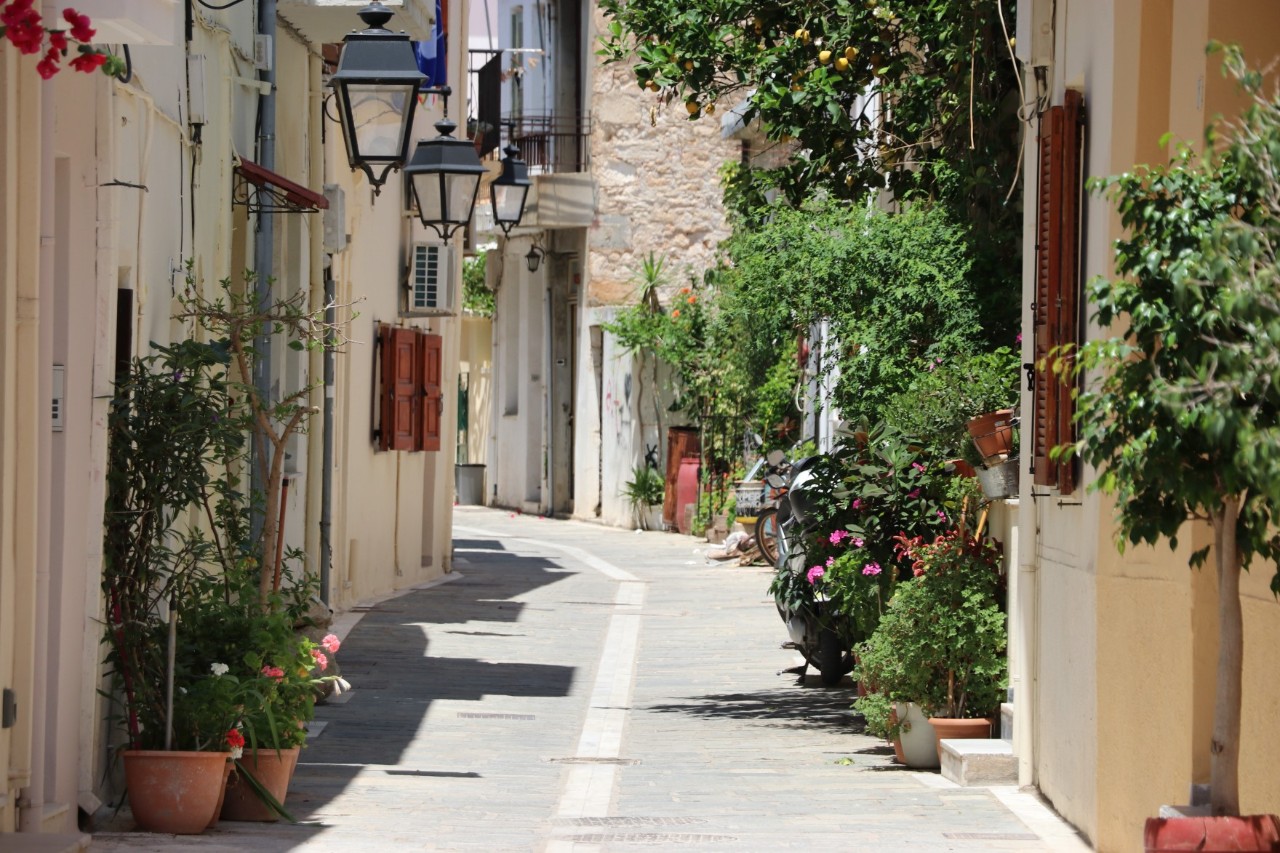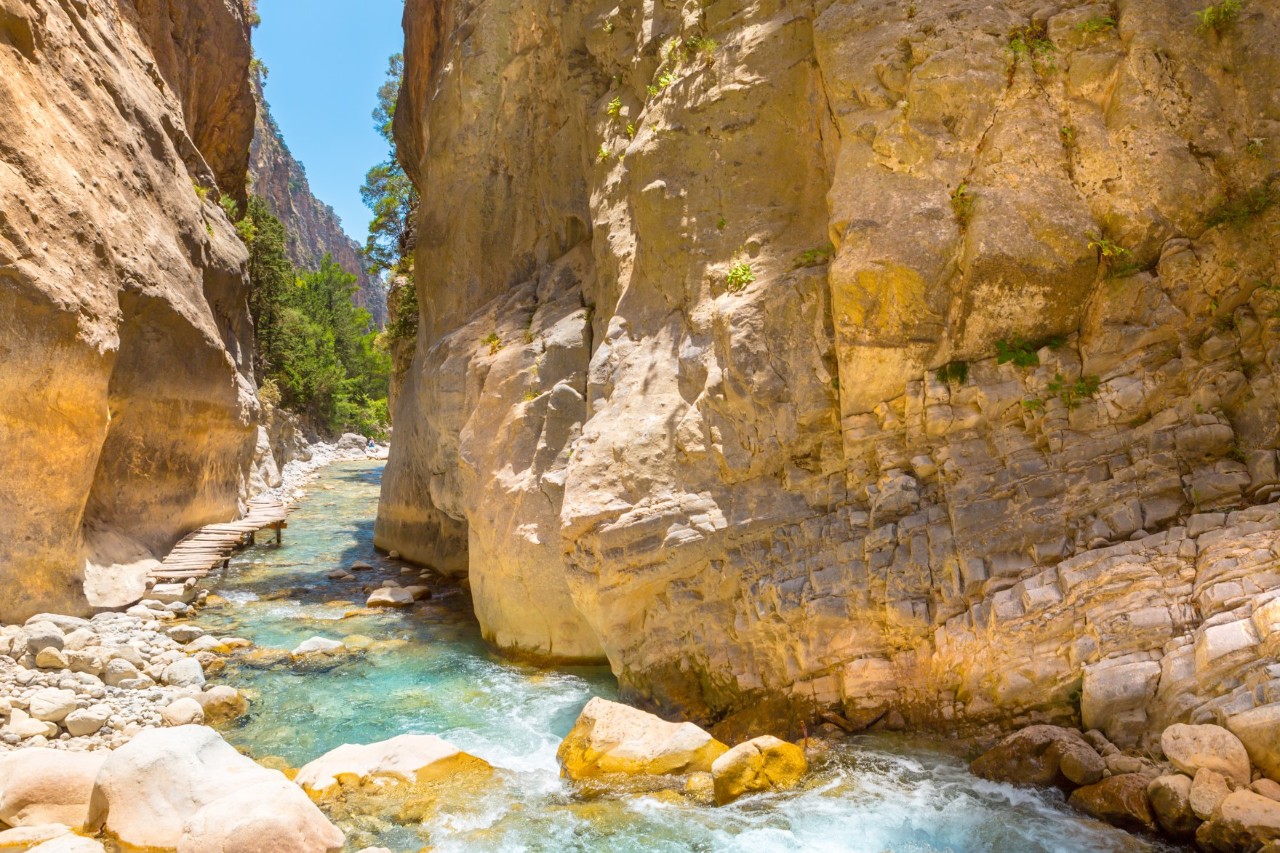Island of the Gods
Crete is the largest island in Greece and is located in the southern part of the Aegean Sea. Does “large” mean mass tourism? No. On this 260-kilometre-long island, those seeking relaxation will find secluded coves and beaches with crystal-clear water. But it's not just beach lovers who get their money's worth. Night owls can party in many trendy bars and clubs. Breathtaking, beautiful landscapes, winding mountain villages, and gorges, such as the famous Samaria Gorge, offer active vacationers many opportunities to explore the island.
Crete does not bear the name “Island of the Gods” for no reason – after all, Zeus, the father of the gods, was born here. For fans of antiquity, there is much to discover from the Minoan culture, one of the oldest civilisations in Europe. The archaeological site of Knossos is an outstanding testament to this era. Crete also has a wonderfully delicious cuisine to offer. Typical dishes such as “dakos” and “apaki” reflect the local culinary tradition.
Numbers, data, facts
- Time difference: + one hour
- Population: 620,000
- Official language: Greek
- Currency: Euro (EUR)
Discover Crete
Heraklion – the adventurous capital
Heraklion – the capital and largest city on Crete – impressively combines ancient history with modern flair. Art lovers can visit the fascinating Archaeological Museum, which offers deep insights into Cretan history and houses treasures from the nearby palace of Knossos. Heraklion boasts a lively old town with Venetian buildings, such as the Loggia and the imposing Koules fortress, which protects the harbour. Lively markets, cosy taverns, cafes, and traditional shops invite you to shop and linger. The Mediterranean atmosphere, the warm-hearted people, and the mixture of tradition and modernity make Heraklion an ideal starting point for exploring Crete. It is worth visiting to experience the island's vibrant culture and rich historical heritage up close.
Places of interest in Crete
Crete from BER
- Airlines to Crete
- Airport from BER
Five tips for...
- Surfing at the picturesque Falassarna Beach
- Heavenly bathing at Kleisidi Beach (southern Crete), an insider tip for nudists
- Snorkelling to the sunken city of Olous
- Boat tour to the island of Spinalonga – once a Venetian fortress and later a leper colony
- Morning sailing trip to the uninhabited island of Dia
- Balos Beach: a highlight is the turquoise lagoon with fine, white sand
- Falassarna Beach: a wide, kilometre-long beach with fine sand, far from the busy tourist resorts
- Elafonissi Beach: turquoise water offers a beautiful contrast to the sand, which is partly tinted pink
- Vai Beach: known for the largest natural palm forest in Europe, which is under protection
- Sweet Water Beach: a beach accessible only on foot, where the White Mountains of Sfakia drop vertically at the beach
- Dakos – the Greek version of bruschetta, a starter made from barley rusk topped with tomatoes, olive oil, feta and oregano
- Boureki – vegetarian vegetable soufflé made primarily from potatoes and courgettes
- Myzithra – soft goat's milk cheese
- Apaki – smoked pork, served with salads or as a side dish
- Tyropittakia – cheese pies filled with soft cheese and coated in local thyme honey
Picture Source title:
© Freesurf/stock.adobe.com
The information published on this page is current as of the date of publication or update.

